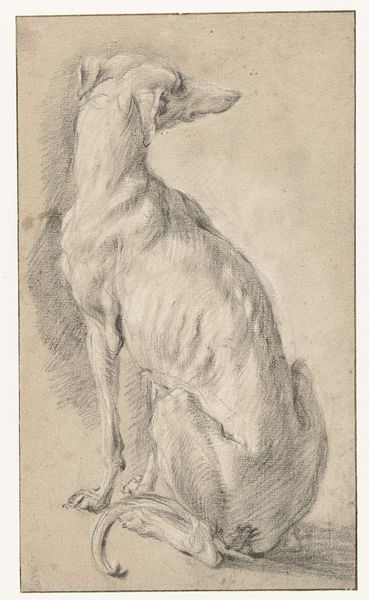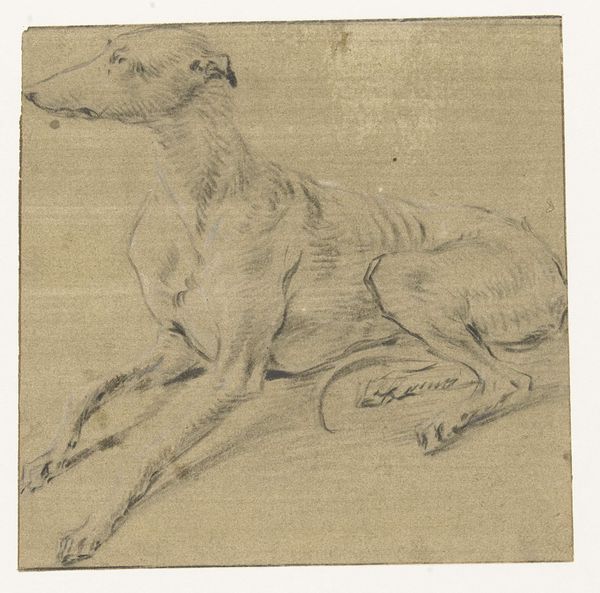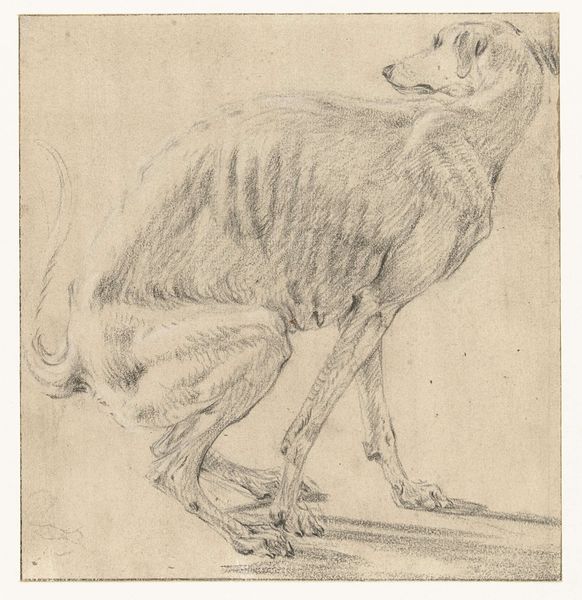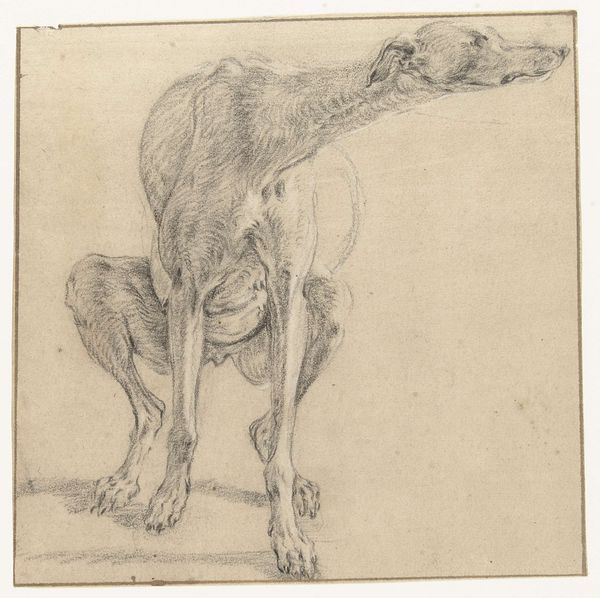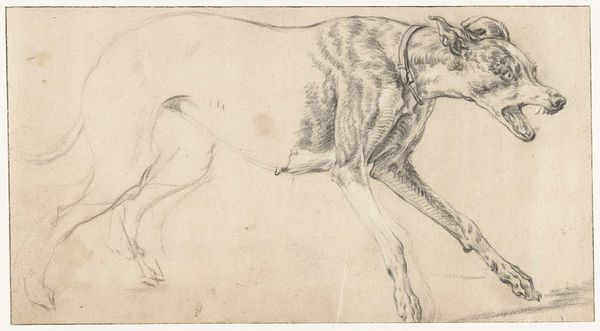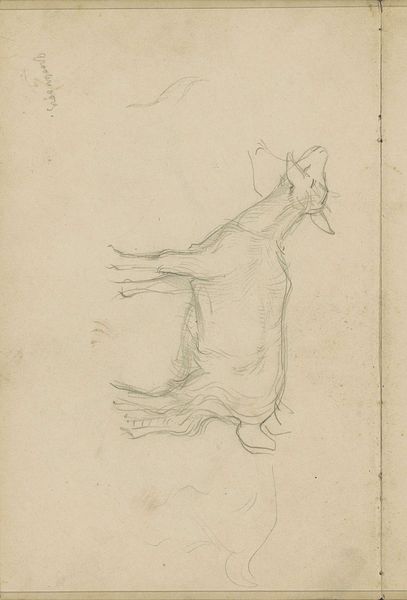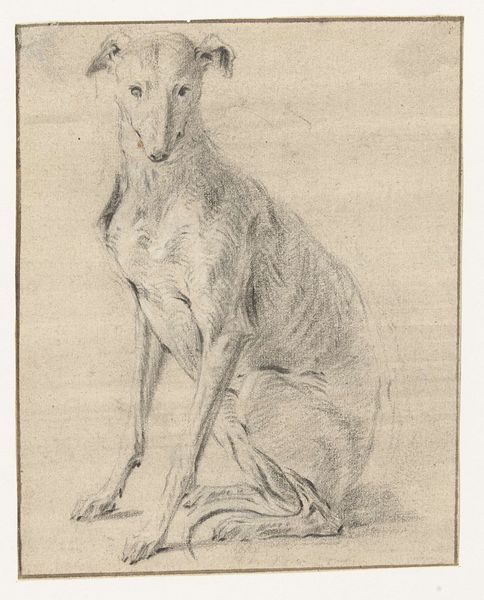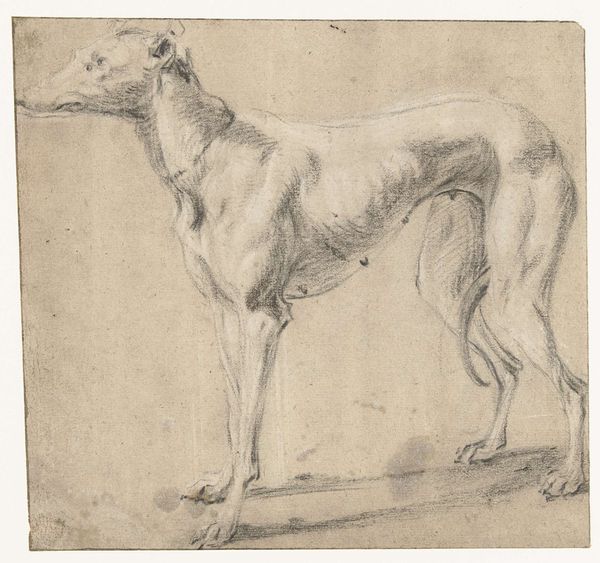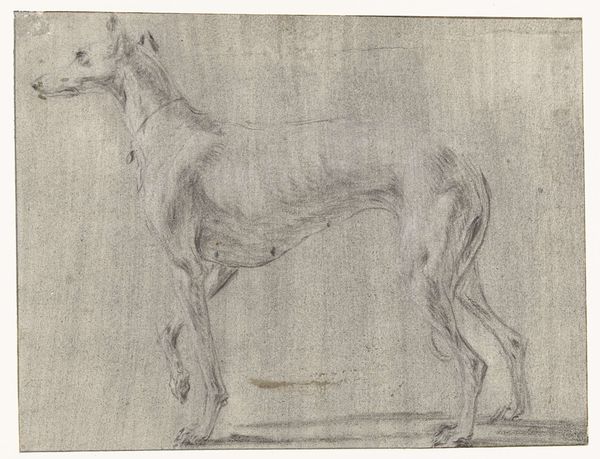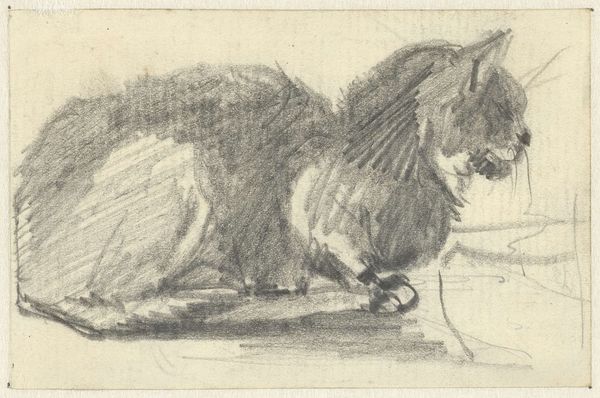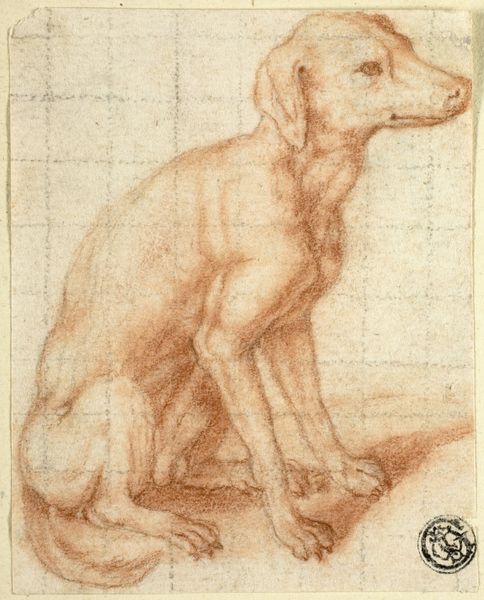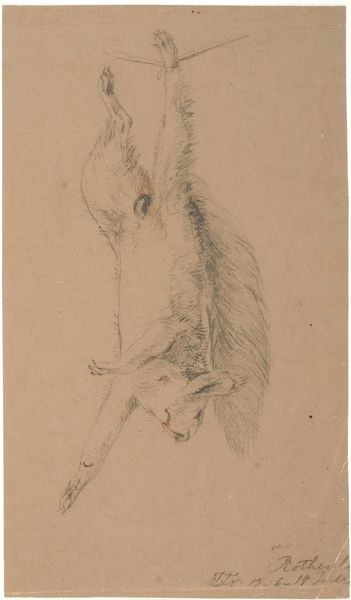
drawing, paper, pencil, charcoal
#
pencil drawn
#
drawing
#
animal
#
pencil sketch
#
dog
#
charcoal drawing
#
paper
#
pencil drawing
#
pencil
#
charcoal
#
realism
Dimensions: height 194 mm, width 150 mm
Copyright: Rijks Museum: Open Domain
Editor: Here we have "A Seated Dog and Dog's Head", a drawing by Frans Snijders, dating somewhere between 1589 and 1657. It's rendered in pencil and charcoal on paper. There's an interesting contrast between the fully realized seated dog and the sketch of just the head above it. What do you see in this piece beyond a study of animal form? Curator: Well, beyond the purely representational aspect, I see a reflection of the socio-political dynamics of the time. Snijders was working in a period where the patronage system heavily influenced artistic production. Consider the role of animals, dogs in particular, in the lives of the wealthy elite. They weren't merely pets, they were status symbols. Editor: So, the act of drawing a dog becomes…political? Curator: Not overtly, perhaps. But art is rarely created in a vacuum. Snijders' skill in depicting these animals—the texture of the fur, the musculature—was a valuable commodity. Who commissioned works featuring animals like these, and what did that say about their own position in society? And, think about how the dog itself is positioned - sitting attentively, looking up. What statement does this pose convey to its owner and those observing? Editor: That makes me wonder about the different levels of completion - why one fully rendered and another a mere suggestion. Curator: Exactly. What does that incompleteness signify? Does it democratize the image, offering a glimpse into the artistic process, or perhaps highlighting the value assigned to certain levels of finish based on the intended patron? Editor: I see it now; it's less about the dog itself and more about the society that values it, and the artist's own position within that structure. Curator: Precisely. And that understanding is crucial for truly engaging with the artwork. I'll definitely look at animal studies differently going forward.
Comments
No comments
Be the first to comment and join the conversation on the ultimate creative platform.
